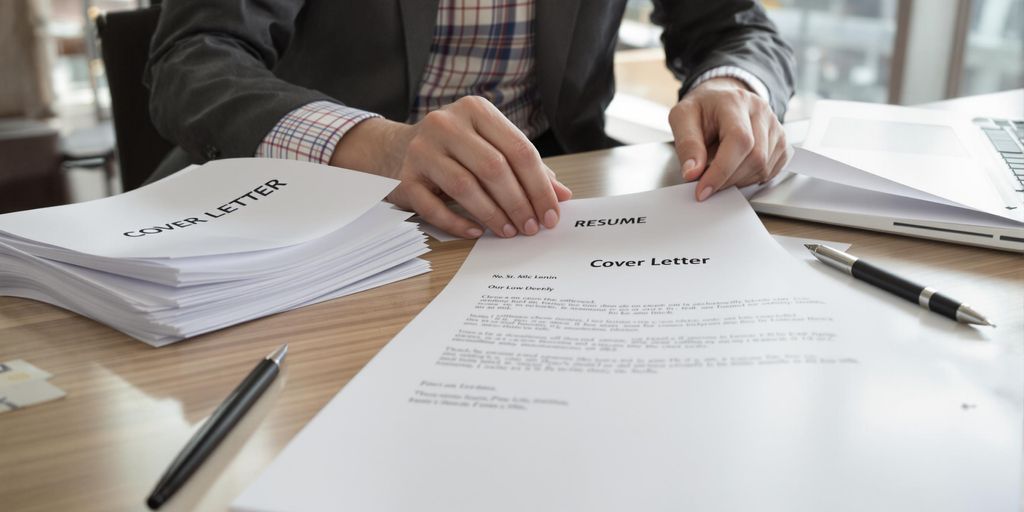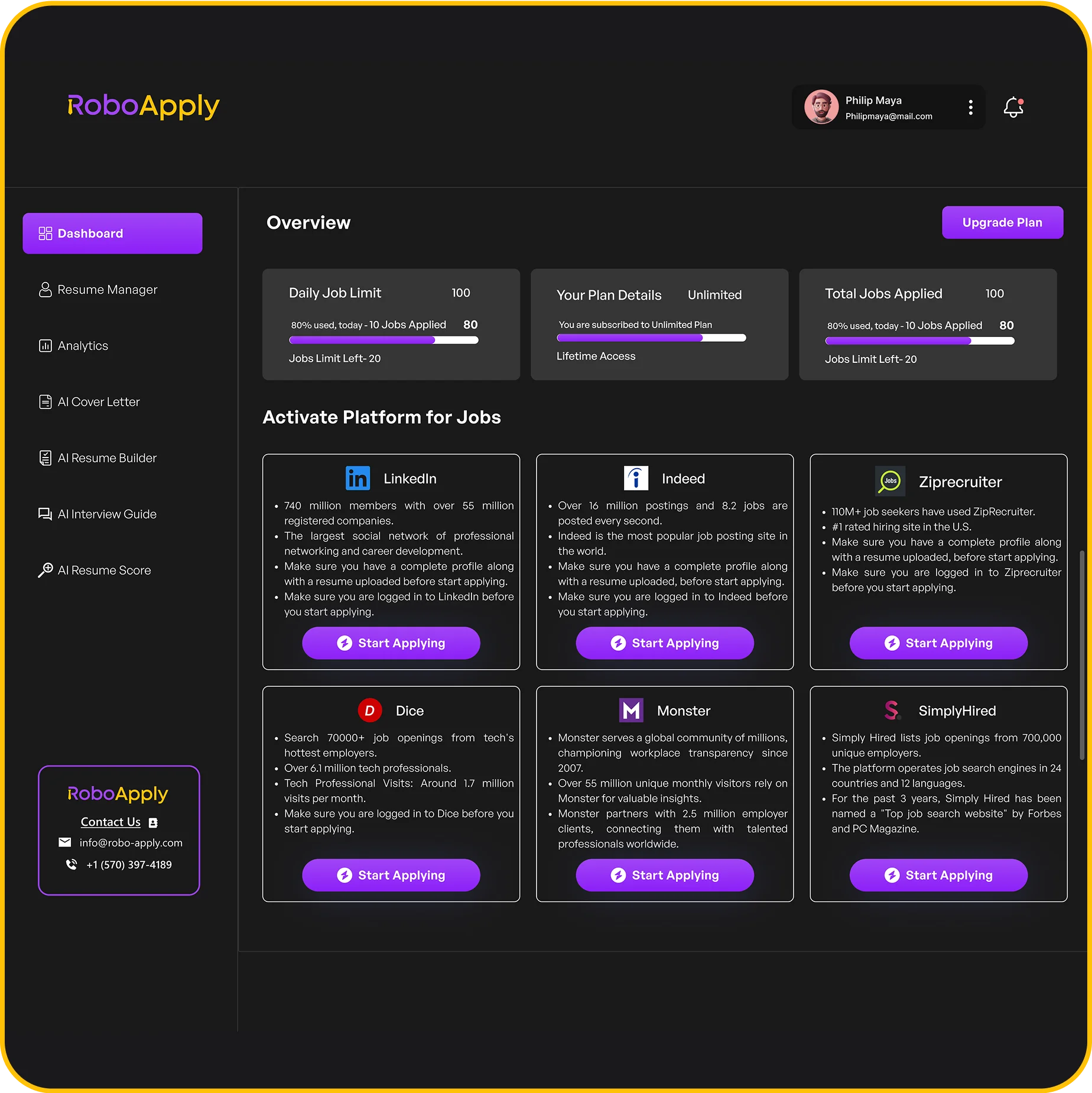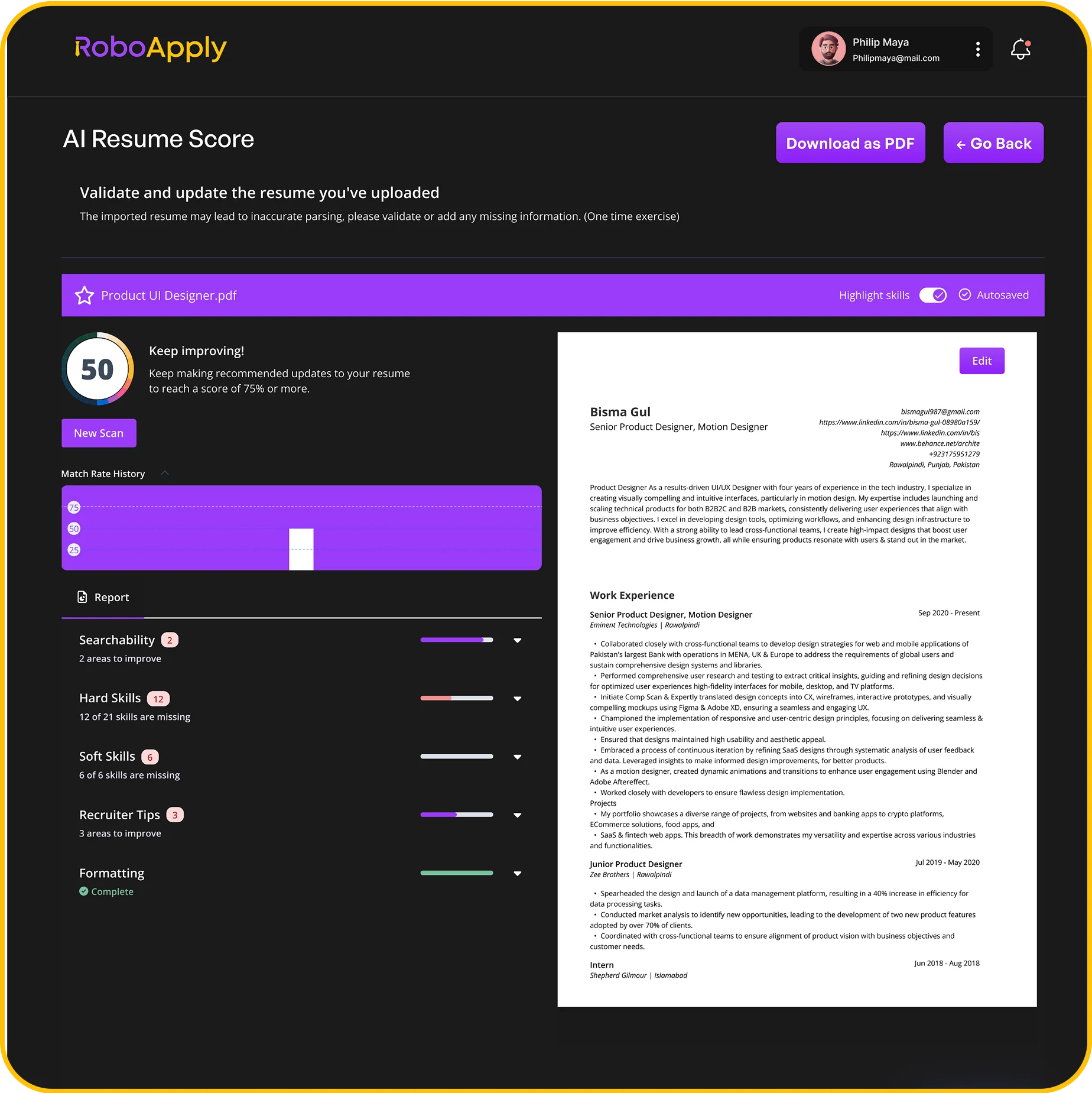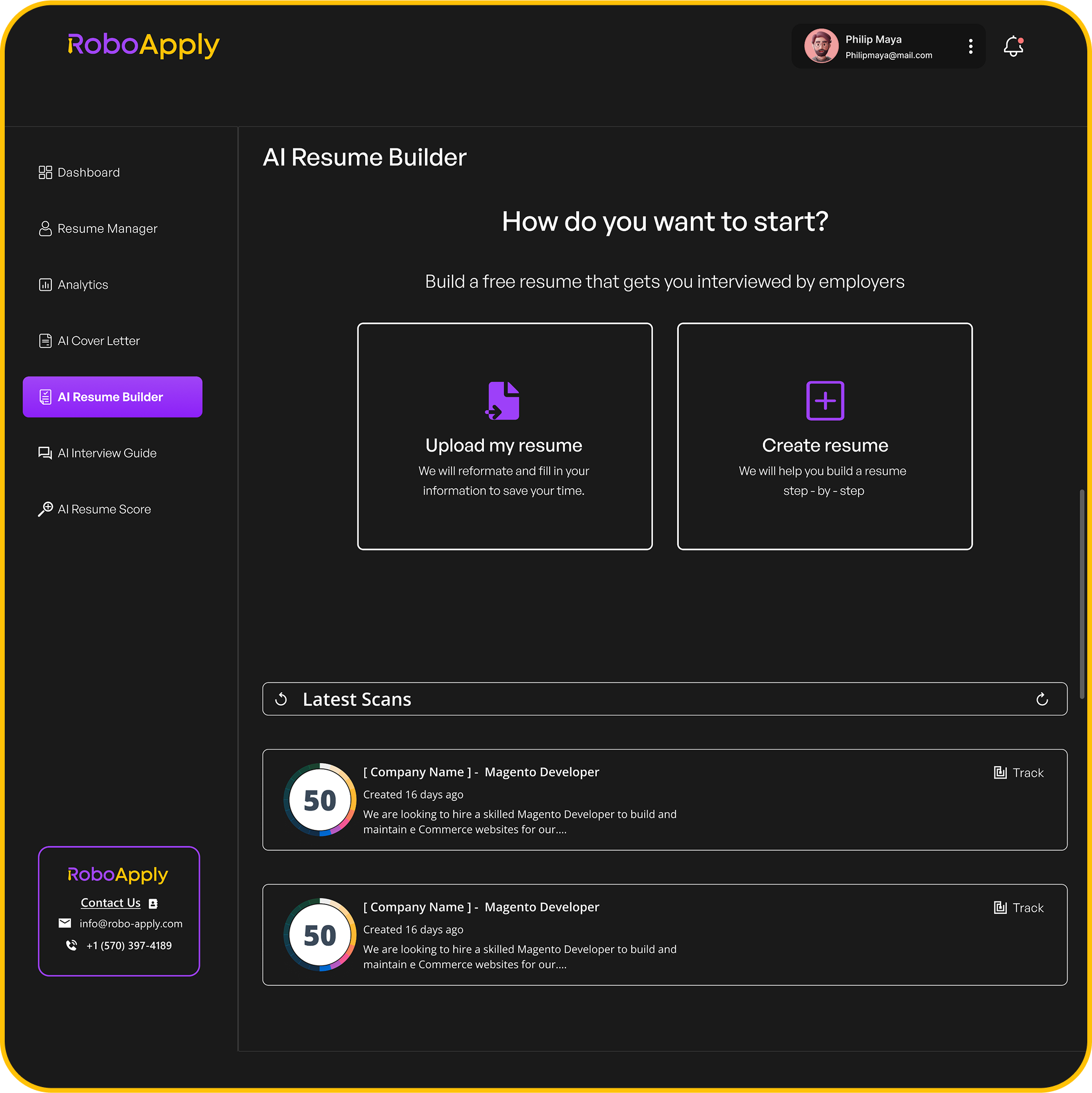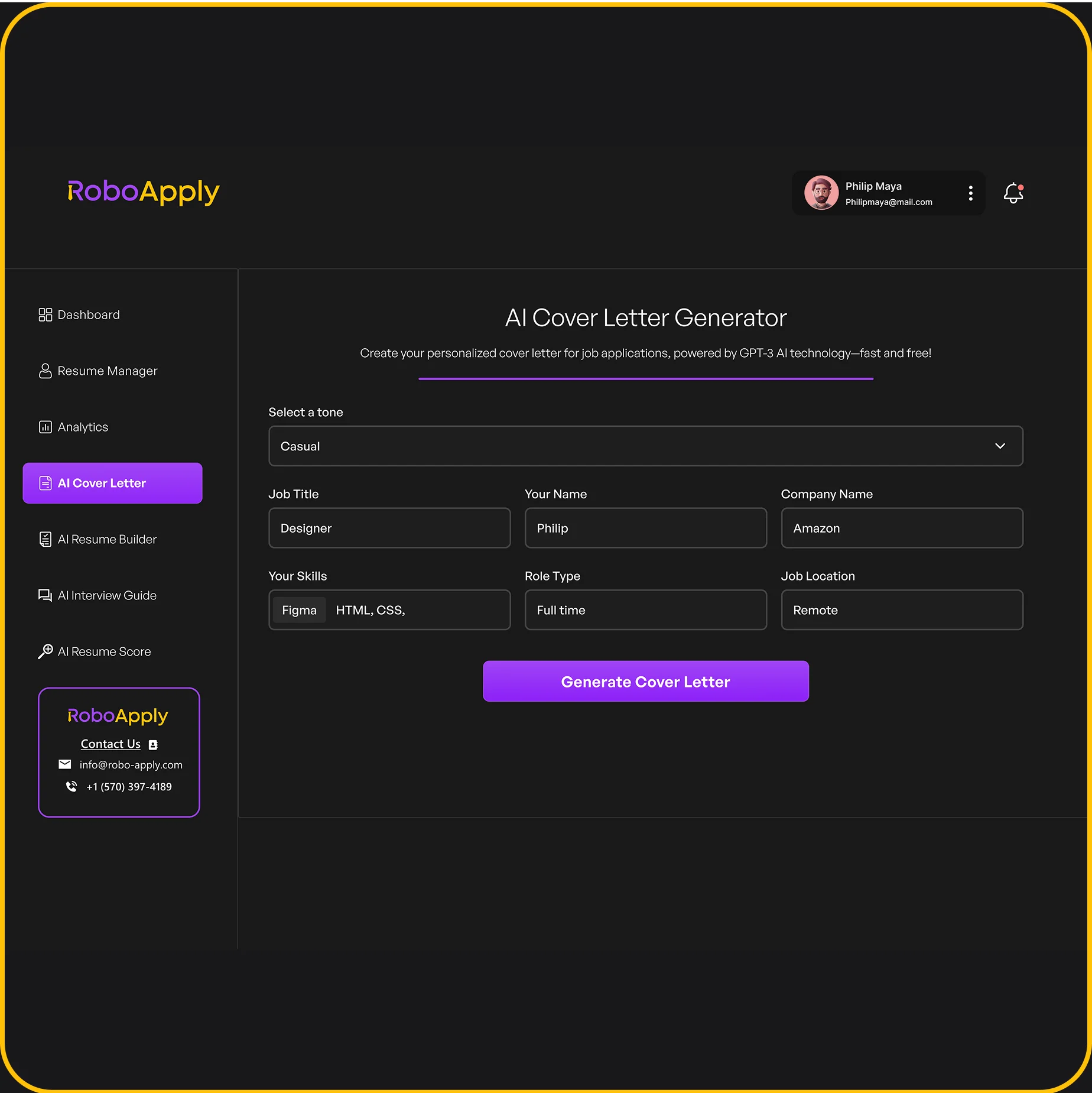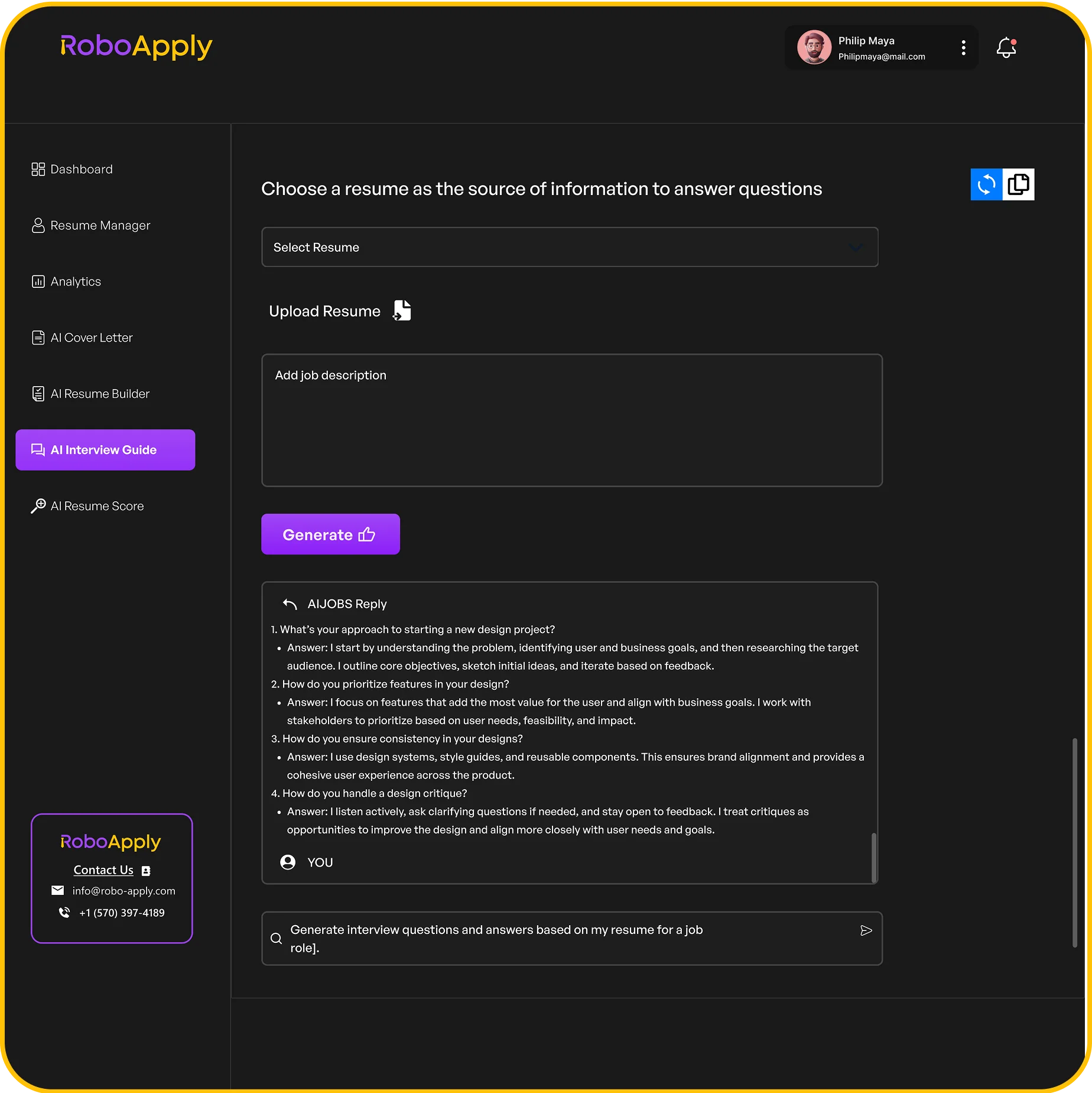Crafting the perfect cover letter is crucial in your job application process. One key aspect to consider is the cover letter word count. Striking the right balance between being informative and concise can make a significant difference in how hiring managers perceive your application. In this article, we’ll break down the ideal length for a cover letter and provide tips to ensure your message stands out without overwhelming the reader.
Key Takeaways
- Aim for a cover letter word count between 250 to 400 words, ideally one page long.
- Keep it concise and focused on relevant experiences to grab hiring managers’ attention.
- Structure your cover letter with clear paragraphs to enhance readability.
- Different industries may have specific expectations for cover letter length, so tailor your approach accordingly.
- Avoid common pitfalls like writing too much or too little; quality over quantity is key.
The Ideal Cover Letter Length: What Hiring Managers Want
Understanding Hiring Manager Preferences
So, what do hiring managers really want when it comes to cover letter length? It turns out, most aren’t looking for a novel. They’re busy people! They want you to get to the point quickly and efficiently. A long, rambling cover letter is more likely to end up in the rejection pile. The goal of a cover letter is to briefly explain why you would be the ideal fit for the position.
Common Length Recommendations
Okay, so how long should your cover letter be? The general consensus is that shorter is better. Most experts recommend aiming for a cover letter that’s between half a page and a full page. This usually translates to around 250 to 400 words. A concise cover letter is key to holding their attention.
Here’s a quick breakdown:
- Ideal Range: 250-400 words
- Preferred Length: Half a page to one full page
- Paragraphs: 3-4 well-structured paragraphs
The Importance of Brevity
Why is brevity so important? Well, think about it from the hiring manager’s perspective. They’re sifting through tons of applications. A short, to-the-point cover letter shows that you respect their time and can communicate effectively. Plus, it forces you to focus on the most important information. A recent survey highlighted the importance of cover letters in the application process.
A concise cover letter demonstrates your ability to prioritize information and communicate clearly. It shows you understand the value of the hiring manager’s time and can effectively highlight your key qualifications without unnecessary fluff.
Determining the Right Cover Letter Word Count
Optimal Word Count Range
So, what’s the magic number when it comes to cover letter length? Most hiring managers are looking for something concise and to the point. A good rule of thumb is to aim for a word count between 250 and 400 words. This range allows you to provide enough detail without overwhelming the reader. Think of it as an elevator pitch – you need to grab their attention quickly and leave them wanting more. It’s about making every word count and showing you understand cover letter sections.
Balancing Content and Length
Finding the right balance between content and length can be tricky. You want to showcase your skills and experience, but you also don’t want to bore the hiring manager. Prioritize the most relevant information and cut out anything that doesn’t directly support your application. Brevity is key. Think about what the employer is really looking for and tailor your content accordingly. It’s better to have a shorter, impactful letter than a long, rambling one. Consider this:
- Highlight your key achievements.
- Focus on relevant skills.
- Quantify your accomplishments whenever possible.
A well-structured cover letter, even if concise, can significantly increase your chances of landing an interview. It’s about quality over quantity.
How Word Count Affects Readability
Word count directly impacts readability. A shorter cover letter is generally easier to read and digest. Hiring managers often have to sift through hundreds of applications, so they appreciate a letter that gets straight to the point. A dense, lengthy letter can be off-putting and may cause the reader to lose interest. Aim for clear, concise sentences and well-organized paragraphs. Think about using white space effectively to improve the visual appeal and make your cover letter length more inviting. Remember, the goal is to make a positive first impression and demonstrate your communication skills.
Structuring Your Cover Letter Effectively
Key Components of a Cover Letter
Okay, so you want to make sure your cover letter actually works? It’s not just about filling space. Think of it like this: your cover letter has a few key parts that need to be there to make sense. You absolutely need an introduction that grabs attention, body paragraphs that sell your skills, and a conclusion that leaves them wanting more. Each part has a job, and if one part is missing, the whole thing falls apart.
Paragraph Structure Guidelines
Paragraphs are your friends. Seriously. They break up the text and make it easier to read. Aim for short, focused paragraphs – think 3-5 sentences each. Each paragraph should tackle one main idea. For example, one paragraph could be about your experience with project management, and another could be about your awesome communication skills. Don’t ramble! Here’s a quick guide:
- Introduction: State your purpose and highlight your key qualifications.
- Body Paragraphs: Provide specific examples of your skills and experience.
- Closing Paragraph: Reiterate your interest and thank the reader.
Maintaining Flow and Coherence
Imagine reading a book where the chapters are all mixed up. Confusing, right? Same goes for your cover letter. You need to make sure your ideas flow logically from one to the next. Use transition words (like "furthermore," "however," and "therefore") to connect your thoughts. And, for the love of all that is holy, proofread! Nothing kills the flow like typos and grammatical errors. Think of it as telling a story – a story about why you’re the perfect person for the job. Make sure it makes sense. A well-structured cover letter shows you know how to communicate effectively.
A good cover letter isn’t just a list of your skills; it’s a narrative that connects your past experiences to the needs of the company. It shows you understand what they’re looking for and how you can help them achieve their goals.
Industry-Specific Cover Letter Length Standards
Variations Across Different Fields
Cover letter length isn’t a one-size-fits-all deal. Different industries have different expectations, and your application needs to align with those norms. What works in academia might be a total flop in the creative sector, and vice versa. It’s all about knowing your audience and tailoring your approach.
Academic vs. Corporate Expectations
In academia, things tend to be a bit more verbose. You’re often expected to showcase your research, teaching experience, and service contributions in detail. This often translates to longer cover letters, sometimes stretching to one and a half to two pages. Corporate roles, on the other hand, usually value brevity. They want to see that you can communicate effectively and concisely, so a one-page letter is generally the way to go. It’s about getting to the point quickly and highlighting your most relevant skills and achievements. You can craft the perfect cover letter by understanding these differences.
Creative Industries and Length Flexibility
Creative industries often prioritize originality and visual appeal over strict length requirements. While a one-page letter is still a good guideline, there’s more room for flexibility. The goal is to showcase your personality and creativity, so don’t be afraid to think outside the box. This might mean using a unique design, incorporating visuals, or writing in a more unconventional style. Just make sure it aligns with the company’s brand and the specific role you’re applying for.
In creative fields, it’s often better to focus on making a memorable impression than sticking to a rigid word count. Think about how you can make your application stand out and demonstrate your unique skills and perspective.
Here’s a quick rundown:
- Creative Fields: Prioritize visual appeal and originality.
- Business Sectors: Maintain a concise, one-page format.
- Academic Positions: Section headings are useful if exceeding two pages.
Common Mistakes in Cover Letter Length
Writing Too Much or Too Little
One of the most frequent errors is submitting a cover letter that’s either too lengthy or too short. Hiring managers often see a too-short letter as a sign of disinterest or laziness. On the other hand, an overly long cover letter can suggest poor organization and an inability to be concise. Aim for that sweet spot, usually between half a page and a full page. It’s about quality, not quantity.
- Too short: Appears uninterested, lacks detail.
- Too long: Seems disorganized, wastes time.
- Just right: Shows respect for the reader’s time, highlights key points effectively.
Ignoring Formatting Guidelines
Forgetting to follow basic formatting can really hurt your chances. Things like font size, margins, and spacing matter. A cover letter crammed with text is hard to read, even if the content is good. Make sure there’s enough white space to make it visually appealing. A well-formatted letter shows you pay attention to detail. Remember, cover letters should ideally be between half a page to one full page.
Failing to Tailor Length to the Job
Not every job is the same, and your cover letter shouldn’t be either. A generic, one-size-fits-all approach is a mistake. You need to adjust the length and content to match the specific requirements of the position and the company. Research the company culture and the job description to figure out what they’re really looking for. Then, tailor your letter to show you get it. Remember to avoid common mistakes in cover letters such as not following instructions.
A cover letter is your first impression. Make it count by being concise, relevant, and tailored to the specific job. Don’t waste the hiring manager’s time with unnecessary information or generic statements.
The Role of White Space in Cover Letters
Creating Visual Appeal
White space, often overlooked, is a key element in making your cover letter visually appealing. It prevents the document from appearing cluttered and overwhelming. Think of it as giving the reader’s eyes a place to rest. A well-spaced cover letter invites the hiring manager to read on, while a dense, text-heavy page can be off-putting. Using appropriate margins, line spacing, and paragraph breaks contributes significantly to a positive first impression. It shows you care about presentation and attention to detail.
Enhancing Readability
Readability is greatly improved by the strategic use of white space. It helps to separate different sections of your cover letter, making it easier for the reader to quickly grasp the main points. Without sufficient white space, the text can appear as a wall of words, making it difficult to follow your train of thought. Consider these points:
- Use single spacing within paragraphs and double spacing between them.
- Maintain consistent margins (typically 1 inch).
- Break up long paragraphs into shorter, more digestible chunks.
White space isn’t just empty space; it’s a design element that guides the reader through your cover letter, highlighting key information and improving comprehension. It’s about making your qualifications accessible and easy to absorb.
Strategic Use of Margins and Spacing
The margins and spacing you choose can dramatically affect how your cover letter is perceived. Standard margins (around 1 inch) provide a professional and balanced look. Adjusting line spacing can also make a difference; single spacing is generally preferred, but slightly increasing it can improve readability, especially for individuals with visual impairments. Here’s a quick guide:
- Top and bottom margins: 1 inch
- Left and right margins: 1 inch
- Line spacing: Single (adjust slightly if needed)
Consider the overall balance of text and white space. Too much text and the letter feels dense; too much white space and it may seem sparse or incomplete. Aim for a harmonious balance that makes your cover letter format inviting and easy to read.
How to Edit Your Cover Letter for Length
Identifying Redundant Information
Okay, so you’ve got your cover letter drafted, but it’s a bit… long. First things first, hunt down anything that’s repeated from your resume. Your cover letter should complement, not duplicate, your resume. Think of it as adding color and context to the bullet points. For example, instead of saying "Managed a team of five," elaborate on a specific achievement or challenge you overcame while managing that team. Cut out generic phrases like "hardworking" or "team player" – show, don’t tell.
Using Concise Language
Time to get brutal with your word choices. Are you using ten words when five will do? Probably. Replace phrases like "in order to" with "to," and "due to the fact that" with "because." Avoid passive voice; it adds unnecessary words. For instance, change "The report was written by me" to "I wrote the report." It’s more direct and saves space. Also, watch out for filler words like "very," "really," and "quite." They often don’t add much value and can be easily removed.
Seeking Feedback from Others
Fresh eyes can spot redundancies and areas for improvement that you might miss. Ask a friend, family member, or career counselor to read your cover letter and provide honest feedback. Tell them you’re specifically looking for ways to make it more concise. Be open to their suggestions, even if it means cutting something you’re attached to. Sometimes, what sounds great to you might not be as impactful to someone else. Getting professional feedback is invaluable.
Editing for length isn’t just about cutting words; it’s about making every word count. It’s about ensuring your cover letter is a compelling and concise representation of your skills and experience. Think of it as crafting a powerful elevator pitch – you need to grab their attention quickly and leave a lasting impression. A well-edited cover letter shows respect for the hiring manager’s time and demonstrates your ability to communicate effectively. It also shows your genuine interest in the position.
Here’s a simple checklist to help you:
- Remove redundant information.
- Replace lengthy phrases with concise alternatives.
- Eliminate filler words.
- Use active voice.
The Impact of Cover Letter Length on Job Applications
First Impressions Matter
In the fast-paced world of job applications, first impressions are really important. Your cover letter is often the first substantial piece of writing a hiring manager sees from you, and its length can significantly influence their initial perception. A cover letter that’s too long might suggest you lack the ability to be concise, while one that’s too short could imply a lack of effort or detail. It’s about striking the right balance to show you respect the reader’s time and can communicate effectively. Think of it as your opening statement – you want to grab their attention without overwhelming them. A well-structured and appropriately sized cover letter shows you understand professional communication. It’s a signal that you’re prepared and serious about the opportunity. This is why understanding cover letter importance is key.
How Length Influences Perception
The length of your cover letter can shape how a hiring manager views your professionalism and communication skills. A concise, well-written letter demonstrates respect for their time and an ability to get to the point. On the other hand, a rambling, overly long letter might suggest you struggle with focus or editing. A too-short letter could be seen as a lack of interest or effort. The goal is to present yourself as someone who can communicate clearly and effectively, and the length of your cover letter plays a big role in conveying that message. It’s about finding that sweet spot where you provide enough detail to showcase your qualifications without losing the reader’s attention.
The Relationship Between Length and Interview Rates
While there’s no magic number, the length of your cover letter can indirectly affect your interview rates. A cover letter that adheres to the recommended length guidelines (typically between 250-400 words) shows you understand and respect professional norms. This can increase your chances of getting an interview. If your letter is too long, it might not even be read fully, reducing your chances. If it’s too short, you might not convey enough information to stand out. It’s about using the limited space effectively to highlight your key achievements and explain why you’re a good fit for the role. Remember, concise cover letters are often preferred.
Tips for Crafting a Concise Cover Letter
Highlighting Key Achievements
When aiming for a concise cover letter, focus on your most impactful achievements. Instead of listing every task you’ve ever done, select the accomplishments that directly relate to the job requirements. Quantify your achievements whenever possible to demonstrate the value you brought to previous roles. For example, instead of saying you "improved customer satisfaction," state that you "increased customer satisfaction scores by 15% in six months." This approach makes your accomplishments more tangible and memorable.
Using Action-Oriented Language
Using strong action verbs can significantly reduce word count while making your statements more impactful. Replace passive phrases with active ones. For instance, instead of writing "Responsibilities included managing social media accounts," try "Managed social media accounts, increasing follower engagement by 20%." This not only saves words but also showcases your proactive approach and results.
Here’s a quick guide:
- Use "Led" instead of "Was responsible for leading"
- Use "Developed" instead of "Was involved in the development of"
- Use "Implemented" instead of "Took part in the implementation of"
Focusing on Relevant Experience
Only include experience that directly relates to the job you’re applying for. It’s tempting to list every job you’ve ever had, but irrelevant information can dilute your message and make your cover letter longer than necessary. Carefully review the job description and tailor your cover letter to highlight the skills and experiences that align with the employer’s needs. Use the opportunity to clarify any gaps in your employment history.
Remember, a concise cover letter demonstrates respect for the hiring manager’s time. By focusing on relevant information and using clear, direct language, you can create a compelling document that showcases your qualifications without overwhelming the reader.
Examples of Effective Cover Letter Lengths
Analyzing Successful Cover Letters
When looking at successful cover letters, it’s important to note that there isn’t a one-size-fits-all solution. However, some common threads run through them. Most successful cover letters are concise and tailored to the specific job description. They highlight key skills and experiences that directly align with what the employer is seeking. The length often falls within the 250-400 word range, allowing for enough detail without overwhelming the reader. Analyzing these letters can provide valuable insights into what works and what doesn’t. It’s also useful to see how different people structure their letters and the language they use. Remember, the goal is to make a strong first impression and demonstrate why you are the best candidate for the job. A well-crafted cover letter can significantly improve your chances.
Templates for Different Industries
Different industries often have different expectations regarding cover letter length. For example, a cover letter for a position in academia might be longer and more detailed than one for a corporate role. Here’s a quick breakdown:
- Academic: 1-2 pages, focusing on research experience and publications.
- Corporate: 1 page, highlighting relevant skills and achievements.
- Creative: Shorter, more visually appealing, and focused on showcasing creativity.
It’s important to research the specific norms of your industry and tailor your cover letter accordingly. Using a template can be a helpful starting point, but always customize it to fit your unique qualifications and the specific job requirements. Remember to keep it concise and focused, regardless of the industry. A bad cover letter can hurt your chances.
Real-Life Case Studies
Examining real-life case studies can provide practical insights into how cover letter length impacts job applications. Consider these examples:
- Case Study 1: A recent graduate applied for a marketing position with a half-page cover letter highlighting their internship experience and relevant coursework. They secured an interview.
- Case Study 2: A mid-career professional applied for a management role with a one-page cover letter detailing their leadership skills and accomplishments. They were offered the job.
- Case Study 3: A senior executive applied for a VP position with a two-page cover letter outlining their extensive experience and strategic vision. They were not selected, as the letter was deemed too long and unfocused.
These case studies illustrate the importance of finding the right balance between providing enough information and keeping the cover letter concise. The ideal length depends on your experience level and the specific requirements of the job. Always prioritize quality over quantity and focus on highlighting your most relevant qualifications.
When to Exceed the Standard Cover Letter Length
Special Circumstances
Sometimes, sticking to the usual cover letter length just doesn’t cut it. There are situations where going a bit longer is not only acceptable but actually beneficial. Think about it: if you’re switching careers, explaining a gap in your employment history, or detailing complex projects, you might need more space to tell your story effectively. It’s all about providing the necessary context that a shorter letter simply can’t accommodate. Just make sure every word counts and adds value to your application. You don’t want to ramble, but you also don’t want to leave out important details that could make you a stronger candidate. Remember to always tailor your cover letter length to the specific job and your unique situation.
Explaining Unique Qualifications
If you have qualifications that are particularly unique or complex, it might be necessary to go beyond the standard cover letter length. This is especially true if your experience doesn’t fit neatly into the job description. For example, if you’ve developed a specialized skill set through unconventional means, you’ll need to explain how those skills translate to the role you’re applying for. This might involve detailing specific projects, explaining the context of your experience, and drawing clear connections between your background and the job requirements. Don’t assume the hiring manager will automatically see the relevance; it’s your job to make it clear.
Addressing Career Changes or Gaps
Career changes or employment gaps often require more explanation than a standard cover letter allows. If you’re transitioning to a new field, you’ll need to articulate why you’re making the switch and how your previous experience is relevant. Similarly, if you have gaps in your employment history, it’s best to address them proactively rather than leaving the hiring manager to wonder. This doesn’t mean dwelling on the negative, but rather providing a brief, honest explanation and focusing on what you’ve been doing to stay current and improve your skills. A longer cover letter gives you the space to address these issues head-on and reassure the employer that you’re still a strong candidate. Remember, a well-crafted cover letter can make all the difference.
It’s important to remember that exceeding the standard length should be a deliberate choice, not a default. Always prioritize clarity and conciseness, and only add extra length if it’s truly necessary to tell your story effectively. If you can convey your message in a shorter letter, that’s always the best option.
Here are some things to consider:
- The complexity of your experience
- The need to explain career transitions
- The importance of addressing employment gaps
Final Thoughts on Cover Letter Word Count
Recap of Key Points
We’ve covered a lot about cover letter length, from understanding what hiring managers prefer to editing your letter for conciseness. Remember, the goal isn’t just to meet a specific word count, but to present yourself effectively. Think of your cover letter as a concise sales pitch – you’re selling your skills and experience to a potential employer. It’s about making every word count and showing why you’re the perfect fit for the job. A well-written cover letter, regardless of its exact length, can significantly boost your chances of landing an interview. Don’t forget to tailor each letter to the specific job and company, highlighting the most relevant qualifications and experiences.
Encouragement to Personalize
While guidelines and best practices are helpful, don’t be afraid to let your personality shine through. A cover letter should be professional, but it should also reflect who you are. Injecting a bit of your own voice can make your application stand out. Think about what makes you unique and how you can convey that in your letter. Did you overcome a specific challenge? Do you have a particular passion for the industry? Sharing these details can make you more memorable. Remember, personalization is crucial, as generic letters can indicate a lack of effort and understanding of the company and role.
The Importance of Continuous Improvement
Crafting the perfect cover letter is an ongoing process. Don’t expect to get it right the first time. Seek feedback, analyze successful examples, and continuously refine your approach. The job market is competitive, and a strong cover letter can make all the difference. Keep learning, keep practicing, and keep improving your cover letter writing skills. Also, remember that a strong cover letter ending is crucial for leaving a lasting impression on hiring managers. It should express gratitude, confidence, and interest in the position, reinforcing the applicant’s fit for the role. Simple and respectful closings, such as formal sign-offs, enhance professionalism. A well-crafted conclusion can differentiate an application in a competitive job market, making it essential to include a personal touch and a polite call to action.
In conclusion, keeping your cover letter concise is key. Aim for a word count that is clear and to the point, usually between 250 to 400 words. This helps you communicate effectively without overwhelming the reader. For more tips on crafting the perfect cover letter, visit our website and start your journey to landing your dream job today!
Wrapping It Up: The Right Cover Letter Length
In conclusion, nailing the right length for your cover letter is key to making a good impression. Most hiring managers prefer something between 250 and 400 words, which usually fits nicely on half a page to a full page. Remember, it’s not just about hitting a word count; it’s about making your case clearly and concisely. Whether you’re a recent grad or a seasoned pro, focus on quality over quantity. A well-structured cover letter can really show off your skills and fit for the job, while also respecting the hiring manager’s time. Keep it relevant, keep it focused, and you’ll be on the right track to landing that interview.
Frequently Asked Questions
What is the best length for a cover letter?
The best length for a cover letter is usually between 250 to 400 words, which is about half a page to one full page. This typically means 3 to 4 short paragraphs.
Why is it important to keep a cover letter short?
Keeping a cover letter short is important because hiring managers read many applications. A brief letter helps you stand out and shows that you can communicate clearly.
Can a cover letter be longer than one page?
It’s usually best to keep your cover letter to one page or less. Most hiring managers prefer shorter letters, and only a small percentage like longer ones.
What should I include in my cover letter?
Your cover letter should introduce yourself, explain why you’re a good fit for the job, and highlight your key skills and experiences.
How many paragraphs should a cover letter have?
A cover letter should generally have about 3 to 4 paragraphs. This allows you to cover your main points without being too long.
What if I have a lot to say in my cover letter?
If you have a lot to say, focus on the most important points. Use clear and concise language to express your ideas without making it too long.
Is it okay to use bullet points in a cover letter?
Yes, using bullet points can be helpful if you want to highlight key achievements or skills. Just make sure it fits well with the overall style of your letter.
How do I know if my cover letter is the right length?
You can check the word count to see if it’s between 250 and 400 words. Also, read it out loud to see if it feels clear and easy to understand.
